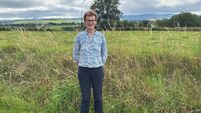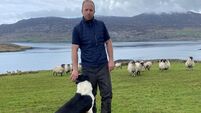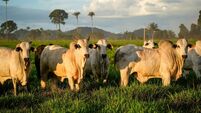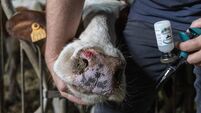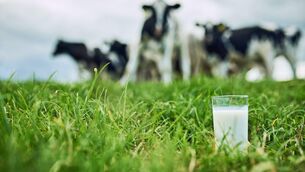Signpost: A guide to successful re-seeding

The main advantage of re-seeding grassland is that it increases both the quantity and quality of grass grown.
The main advantage of re-seeding grassland is that it increases both the quantity and quality of grass grown.
Estimates vary, but new re-seeds should grow in the region of 20-40% more grass and importantly, a lot of this extra growth will occur in the spring and autumn.
Increased animal performance, improved responsiveness to nitrogen and a great opportunity to establish clover are all additional benefits of reseeding.
However, at roughly €400/acre it represents a significant investment, while also been without the field for between 5-8 weeks. Thus, the importance of a successful re-seed is vital.
Before spending money on re-seeding any drainage issues must be addressed first. Drains should be cleaned and if shores are required, they should be installed.
Ploughing can help with drainage and levelling badly damaged fields, but be aware that the “good soil” with the high fertility is being buried and this may take some years to be built back up again.
Use the Pasture Profit Index, PPI, to select suitable grass/clover varieties. These varieties have been tested under Irish conditions for important traits to Irish farmers, like spring/ autumn growth, herbage quality & grazing utilisation.
Take some time to select varieties that are best suited to what you want the new sward to do, grazing, silage or a mix.
In general, the rule is, the earlier in the growing season re-seeding is done the better.
The reason for this is that post-seeding management, grazing off the sward and post-spraying, can be difficult once we get into later into the year. Also, successful clover establishment is a lot easier with April or May re-seeding.
A young grass/clover plant is not very strong and will struggle badly with competition from weeds. Thus, it is essential to spray off the old sward.
Any of the glyphosate products are effective, but rates need to be carefully checked as they can differ a lot. Most of the products need 7+ days to fully absorb the chemical. After the plant is dead the sward can be cut for silage or grazed.
Ensuring adequate Phosphorus (P), Potassium (K) and Lime is essential for successful re-seeding. The most accurate way to judge a soil's requirement for these is to do a soil test, but this can take three weeks to get results back, so plan in advance.
If the soil is not being ploughed and a min-till method is been used, i.e. discing or power harrowing, lime will need to be applied, 2t/ac, to counteract the acid that will be produced as the old sward decays.
As a general rule of thumb, three bags of 10:10:20 per acre are required for re-seeding but this will depend on the soil test results and if a farm is allowed to buy in Phosphorus. FYM or slurry can both be used to reduce or replace bag fertiliser.
There is sometimes a lot of debate about ploughing or using min-till. The decision will depend on a number of factors including cost, stoniness of ground, equipment available etc.
All the methods can give excellent results, but the basic requirement does not change, which is a fine firm seedbed. After sowing, the field should be rolled to ensure good soil-to-seed contact and preserve the moisture in the soil.
If clover is important make sure this is on the surface.
Thistles, nettles, red shank and docks commonly emerge after sowing. These should be sprayed, preferably with a clover-safe spray, five to six weeks after sowing, or when grass is at the two to three leaf stage.
Pests like fruit fly and leather jackets can attack re-seeds and should be sprayed early if present. These tend to be more of a problem when there is a lot of trash left on the surface.
In more recent years, clover has become an increasingly important way to help agriculture to meet its environmental obligations. By supplying N to the sward that otherwise would be supplied by artificial N.
Also, clover improves the mid-season digestibility of the sward, this helps to improve animal performance. If clover is to be targeted to be active in the new sward, particular care must be taken with post-emergence spray, soil fertility has to be high, and the sward has to be well grazed frequently with a low pre-grazing cover (less than 1,000kg/ha).
As a guide, graze the re-seed once the plants do not pull out of the ground. If weather allows, swards should be grazed by cows, as they will graze it off very quickly.
However, if conditions are poor calves or sheep can be used, but try to get the field grazed as quickly as possible.
Re-seeding is an expensive investment, but in general, offers an excellent return on investment. However, for the investment to succeed attention to the above detail is vital, thus giving the young delicate grass/clover plant every chance to establish.

